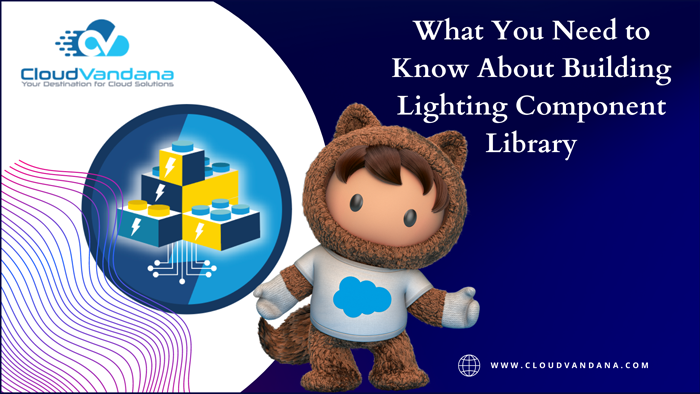Streamline your development workflow with the Salesforce lightning component library – learn the basics and how to get started quickly with this comprehensive guide by CloudVandana.
Developing applications for the Salesforce Lightning platform can be a complex process. Streamline your development workflow with a lightning component library – from basics to getting started quickly; this guide will teach you everything you need to know.
What is a Salesforce Lightning Component Library?
A Lightning Component Library is a container for shared, reusable resources that can be used across multiple Salesforce applications and components. The library helps developers quickly build high-quality applications by reusing the existing components, saving time, and eliminating errors. It also provides improved consistency across the organization’s development efforts.
How to Build Lighting Components for Your Website or App
Creating a component library involves building custom Lightning components and design tokens that can be easily reused as part of your development workflow. First, you must create the Lightning components using HTML, Javascript, and CSS coding. The components must have a modular structure so they can be quickly adapted for different app needs and environments. After the component is created, design tokens must be added to define the look and feel of the component. Finally, add the component and its associated resources to your Lightning Component Library for reuse across multiple apps or websites.
Best Practices for Developing Styleguides and UI Kits
Creating an efficient UI Kit and Styleguide is essential when building a Lightning Component Library. UI Kits provide developers with an organized library of components, patterns, and styles. Properly documenting this information ensures that the user interface remains consistent across platforms. Styleguides help ensure designers create components and layout elements to complete the overall design vision. As such, creating detailed UI Kits and simpler Styleguides will have a positive impact on your development process for the Lightning Component Library.
Tips on Version Control and Tracking Progress in a Component Library
To ensure version control and track progress within a Component Library, it’s important to have a system in place to quickly update and deploy. Version control management tools like Github can be helpful when setting up projects, tracking issues/bugs, or making changes. Additionally, regular code reviews and manual tests help ensure quality assurance during the development process. Lastly, tracking changes through reliable logging libraries helps reduce maintenance time for future asynchronous tasks.
Things to Keep in Mind When Maintaining Your Libraries Long-Term
Keeping your libraries up-to-date requires ongoing maintenance and conscientious effort. To ensure your library remains maintainable and optimally efficient, it’s important to consider the following: consuming only what’s necessary by using linting, setting up unit tests for each Component Library, monitoring usage of components in various environments, proactively verifying security rules with regular scans and checking for integration bugs. Additionally, never forget to document code – detailed comments and documentation help developers quickly identify code objectives and avoid future debugging issues.
Are you looking for expert LWC developers to build Lightning Component Libraries or complete the Salesforce classic to Lightning migration process successfully? CloudVandana can provide you with the best team of remote LWC developers to level up your workflow and deploy your projects faster. Call Now.










